Two researchers, two continents apart, join hands to conquer a migraine thats baffling doctors by studying the Parsi gene, which could beneficial for disease mapping due to the communitys endogamous nature

Among the many genetic traits of the Parsis that The AVESTAGENOME Project is trying to study, is longetivity. Above is a photograph of a 86-yr-old from the community, who Mumbai-based photographer Kurush Umrigar profiled as part of the Parsee Portrait Pro
“What happens to you when you get the headache?” Dr K Ravishankar asks a patient identified simply as Mr IS in the mp3 recording provided to this paper. “People become small in my vision, and my eyes get swollen. My nose is blocked,” he tells the consultant-in-charge of the headache and migraine clinics at Jaslok and Lilavati Hospitals.
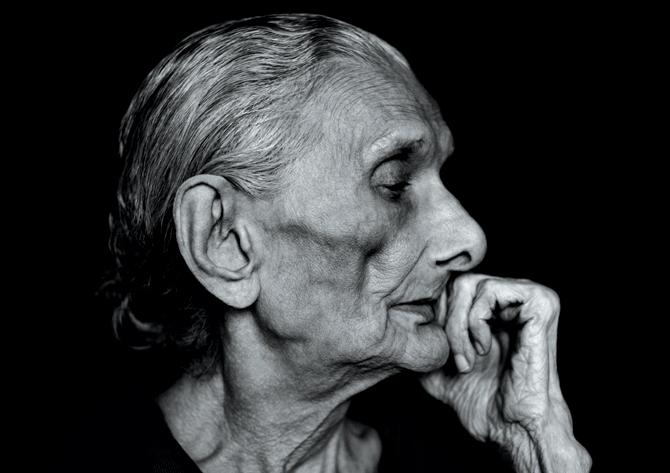
Among the many genetic traits of the Parsis that The AVESTAGENOME Project is trying to study, is longetivity. Above is a photograph of a 86-yr-old from the community, who Mumbai-based photographer Kurush Umrigar profiled as part of the Parsee Portrait Project. Kicked off last year, it aims to document, through black and white portraits, interesting elderly faces of India’s Parsis. Follow Umrigar on Instagram @kurushumrigar PIC/ ©Kurush M. Umrigar; All Rights Reserved
This strange episode is followed by a headache accompanied by nausea and the inability to bear noise. Unable to walk, Mr IS must lie still. The pain, which usually comes on in the mornings, sometimes more than once a day, can last for up to a week. “This time,” he says in the 2006 recording, “it has lasted for 15 days.” The Mumbai resident, says Ravishankar, has been battling migraine with aura for the last three years.
Migraine is a neurological disease characterised by recurrent moderate to severe headaches and affects about 303 million individuals worldwide according to the World Health Organisation. Typically, the pain occurs on one side of the head, is pulsating and debilitating. Of the world’s migraineurs, 25 per cent to 30 per cent suffer from aura, a type of migraine in which the pain is preceded by blind spots and seeing zigzag patterns. The percentage of aura patients in India, says Ravishankar, is between seven and 10 per cent.
While there is no fool-proof solution yet to Mr IS’s malaise, the answer to a possible cure and preventive therapy may lie in research that will soon kick off 1,000 km away, at Avesthagen Limited, a Bengaluru-based innovation driven life sciences company.
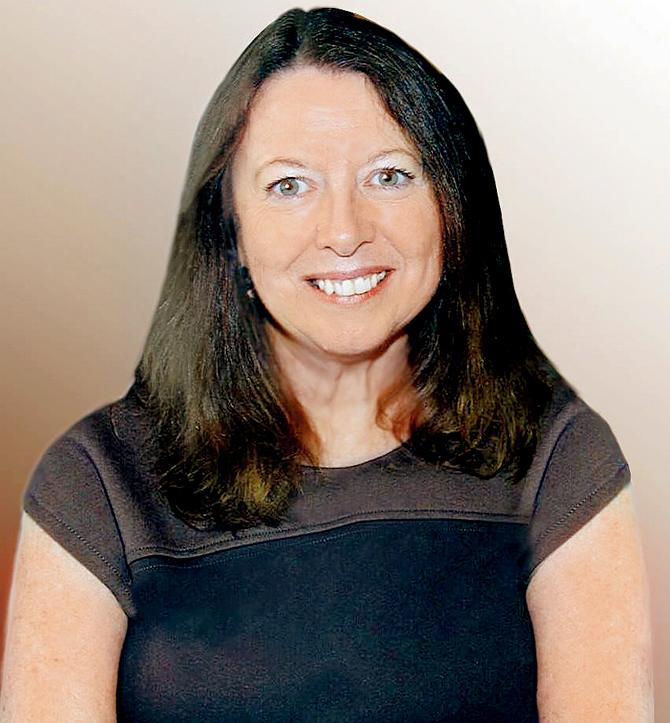
Professor Lyn Griffiths, who is collaborating with Dr Villoo Morawala-Patell-s Avesthagen has been working on migraine genetics for years, and is hopeful that a vitamin supplementation therapy will help migraine with aura patients
Studying the Parsi gene
Founded as an academic startup in 1998 by Dr Mrs Villoo Morawala-Patell, Avesthagen started business activities on March 21, 2001. It studies complex biological systems by monitoring the gene, protein, and informational pathway responses; integrating these data; and ultimately, formulating mathematical models that describe the structure of the system and its response to individual perturbations.
In 2007, she launched The AVESTAGENOME Project which aims to collect biological material from 25,000 Parsi individuals with a dual aim — firstly, preserving the biological heritage of the declining community it is estimated that there are around 69,000 Parsis in the country in an archive of blood samples with detailed data on genealogy, disease history and dietary social habits. And, secondly, to use the data to discover novel biomarkers and drugs for disease classes, including metabolic syndromes, auto-immune diseases, breast and prostate cancers and neuro-degenerative disorders like Alzhiemer’s. The latter two find high incidence among the community that includes descendents of Zoroastrian refugees, who fled from Persia around the 8th century and settled in India. The Mumbai Cancer Registry 2002-04 states that 20 per cent of all cancer cases among the Parsis are to do with the breast as compared to 14 per cent among non-Parsis.
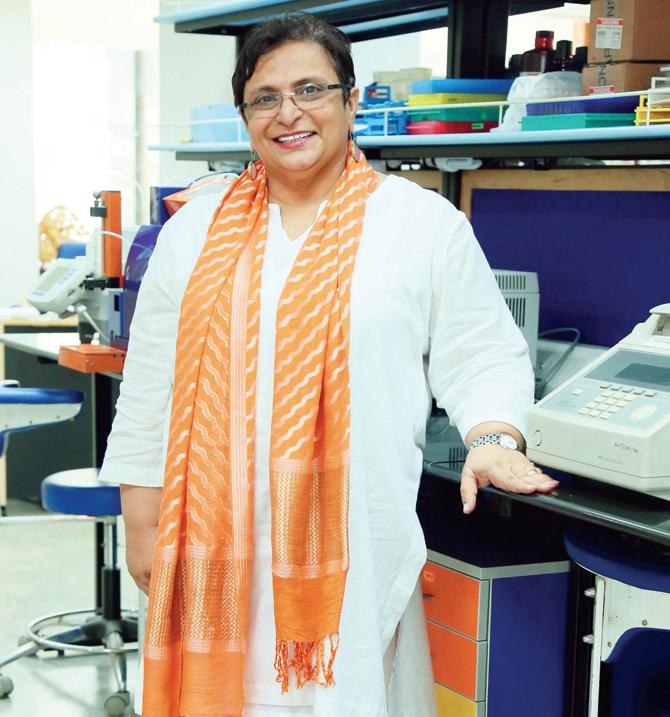
Dr Villoo Morawala-Patell-s life sciences firm has collected blood samples of 4,500 Parsis to further disease research, including that associated with migraine. Pic/Ajeesh F Rawther
The project also hopes to study the Parsi genetic trait of longetivity. Interestingly, early this year, Morawala-Patell decided she would also address migraine, one of the most common ailments to baffle specialists struggling to find a cure. This August, Morawalla-Patell and her research were featured in a podcast titled, The Intersection on Audiomatic, a site for high-quality podcasts from top-rated talents see link at end of copy. Padamparna Ghosh and Samantha Subramanian, who anchor the fortnightly podcast, discussed how the Parsis could play a role in “helping the world get rid of its worst headache”.
What makes the Parsis crucial to the research is their endogamous marrying among themselves nature. Geographically, linguistically and religiously isolated from their neighbours, endogamous populations have often been successfully utilised to understand human disease. Results obtained from such studies can be extrapolated and validated in other communities in the country of research, and around the world. Endogamous populations tend to be predisposed to certain diseases, and their low genetic heterogeneity makes studying these dise-ases easy.
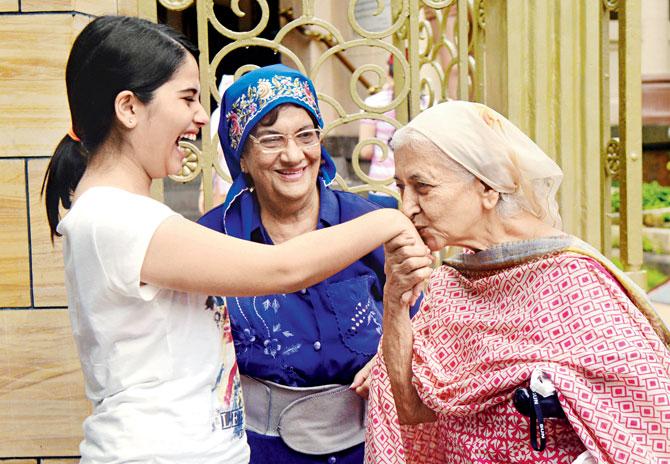
Due to their endogamous nature and small numbers, the low heterogeneity among Parsi genes is beneficial for disease mapping. Results obtained from studies conducted on communities such as this can be extrapolated and validated in other communities. REPRESENTATION PIC
Dr Lalji Singh, pioneering scientist in the field of DNA fingerprinting in India, and managing director of Hyderabad-based Genome Foundation, says, because Parsis are endogamous “there is a high probability that recessive, defective genes, which may be unique to a particular disease, will arise in them.” The recessive, defective gene that Singh refers to is one that is not expressed and is overriden by the dominant gene unless there are two of them, one from each parent.
In the past, studies have been conducted on other endogamous communities, such as the Ashkenazi Jews. A 2014 study by Shai Carmi, a computer science professor at Columbia University, together with a group of medical researchers, found that all Ashkenazi Jews can trace their ancestry to just 350 individuals, dating back to 600 to 800 years. The resulting acute genetic similarities, say scientists, can help them catalogue nearly all genetic variations from the founding population, thereby improving disease mapping.
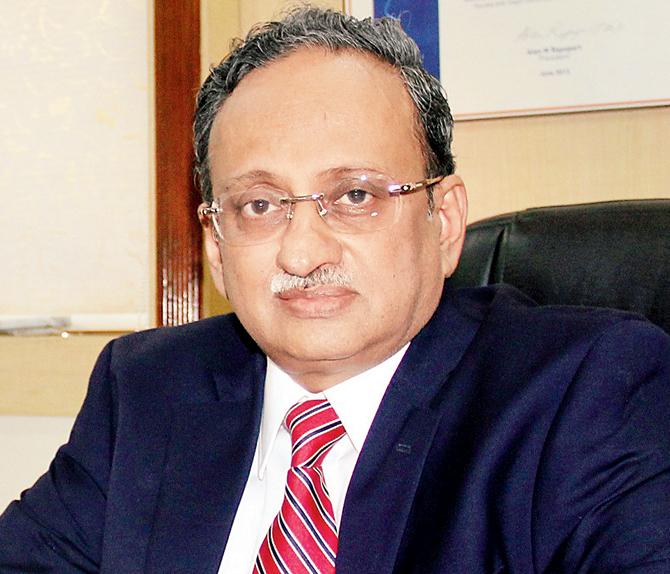
Dr K Ravishankar
While the Parsis are not the only endogamous population in India, that their numbers are small, matters. “The prevalence of the caste system in the country ensures that most people marry within their caste. However, because most castes are defined by large numbers, there is greater heterogeneity in their genes,” Singh explains. Another small, endogamous community is that of the Nisads, boatmen from Jaunpur in Uttar Pradesh. “They also marry among themselves and there are only a hundred of them left.” Over generations, passing on defective genes has given rise to vitiligo in one particular family. Which gene? That, says Singh, is not yet known. “While all genes are known to science, every gene’s function isn’t,” he clarifies.
Heachache that won’t heal
A 29-year-old medical professional from Mumbai, who didn’t wish to be identified, says she started experiencing headaches when she was 13. Initially, her parents thought that it was related to poor eyesight. It was later that her condition was diagnosed as migraine with aura. “When I started studying for my medical exams, stress would be the trigger. One episode would last eight hours. Getting an attack three times a week was common,” she says. She was unable to see clearly and couldn’t tolerate bright light. Working during an attack, she calls a punishment. “You have to take those days off. The only thing that helps is going to sleep.” After 16 years, she is yet to pin point the exact trigger, but she has learnt to sleep and eat on time, and pop a painkiller when she thinks an attack is on its way.

It’s a reality that 18 per cent of the world’s female population has to live with. Yet, like her, most patients first head to the ophthalmologist. This, says Ravishankar, is the first obstacle. “Migraine is under-recognised, under-diagnosed and under-treated,” says the doctor who sees five to eight new patients every working day, some of them having suffered attacks for as many as 15 years.
Currently, he adds, diagnostic tools don’t help confirm whether a patient is in fact, a migraine sufferer. “It won’t show up on a CT scan, neither is there a widely accepted biomarker that will show up on blood tests,” he says. What helps then is asking the right set of questions based on criteria outlined by the International Headache Society about the nature of these headaches, the duration and the accompanying symptoms.
Ravishankar uses the internationally accepted Migraine Disability Assessment Score MIDAS instrument, which provides a measure of productive days lost to disability caused by migraine headaches, as well as frequency and severity of attacks. Current course of medication includes prescribing prophylactics which make the brain less excitable, and therefore, more resistant to triggers.
This is a long-term measure. During the attack, the patient is prescribed an acute abortive medication that reduces the suffering. But even these specific medicines, do not work all the time in all the patients, says Ravishankar.
There is a surgical option, in which electrodes are placed along the pain nerves with a pacemaker, so that when the patient feels an attack coming on, s/he can deliver a current to numb the nerves. However, since feeling pain is an important function of the body, the nerves cannot be permanently numbed.
It’s in the absence of regular pathological biomarkers that finding a genetic connect to migraine becomes imperative.
The Australian breakthrough
Genetic research in migraine could then be key to finding a cure because although the cause of the disease hasn’t been fully understood, it has been agreed that both, environment and family history play a role.
Professor Lyn Griffiths is a molecular geneticist at the Institute of Health Biomedical Innovation with Australia’s Queensland University of Technology QUT. It’s a lab that undertakes research to identify genes involved in common chronic disorders, and neurogenetic disorders like migraine, in particular.
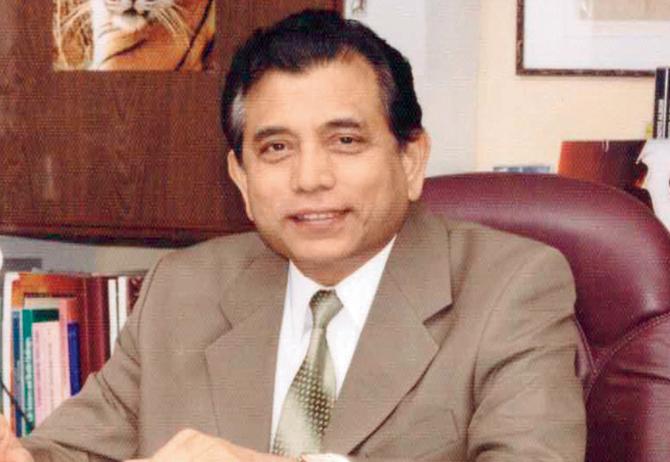
Dr Lalji Singh
“We have been working on migraine genetics for years and have identified a number of genes that play a role in the disorder. We’ve also developed diagnostic tests to identify severe familial migraine sub-types. Although there are some very good migraine treatments available, they are not effective for all migraine sufferers. There is need to develop more targeted treatments,” she says in an email interview.
In 2005, Griffiths and a team of researchers published a paper that showed how vitamin supplementation reduced migraine severity and frequency, and that the presence of the MTHFR gene and its variation in the DNA sequence, MTHFRC677T, influenced response to this treatment in migraine with aura patients.
MTHFRC677T is associated with the function of a vital enzyme in the body that works towards metabolising a highly reactive amino acid called homocysteine. The enzyme helps keep homocysteine levels in control, thus preventing injury to cells lining the inner surface of blood vessels. That researchers claim that migraine pain may be connected to dilation of cerebral blood vessels makes maintaining optimum levels of homocysteine important.
In 2008-9, Griffiths conducted Phase 1 of a trial on 52 migraine with aura patients, all Caucasian adults from Australia suffering from migraine for more than 20 years, and carrying a family history of the ailment. The trial was to examine whether a daily supplementation of Vitamins B6 and 12, and folic acid, would help lower homocysteine levels and migraine disability. One half of the group was put on placebo tablets, the others on vitamins. She found that the vitamins made the enzyme work better and faster, bringing down homocysteine levels by 39 per cent compared with baseline, a reduction that was greater than placebo. “More importantly, the treatment had a very good effect on migraine — reducing frequency of attacks and severity of pain in those on the daily Vitamin B treatment,” says Griffiths.
The Phase 2 trial was conducted over six months on 206 female patients aged 18 to 60, all of European ancestry from across Australia suffering from migraine for over five years with a current diagnosis of migraine with aura. The findings of this study conducted between 2010-12 were published in 2012, confirmed that the vitamin supplementation was effective in reducing migraine, but also that both the MTHFR and MTRR gene variants were influencing treatment response in female migraineurs.
In May this year, Avesthagen and QUT joined hands to expand the study and bring the therapy to India. “I felt there is such an unmet understanding of what migraine is or the various different types of migraines. So, when I heard that a specific genetic marker had been identified for a particular type of migraine and there was preventive therapy for it, I found it could be an interesting opportunity for us for research and business,” says Morawala-Patell.
Fuelling the engine
She calls The AVESTAGENOME Project an engine of discovery, spanning years of research and involving multiple laboratories. “It will require significant funding of about 60-100 million USD over 10 years, and perhaps take 300 global scientists to create an output for Precision Medicine,” she says over email.
Between 2007 and 2008, Avesthagen collected blood samples from 4,500 Parsi individuals, along with details of their genealogical, medical, social and nutritional histories and habits. The samples were collected from across 10 Indian cities including Hyderabad and Secunderabad 437, Navsari 687, Surat 708 and Ahmedabad 560. From Mumbai, 1,108 samples were collected.
“We collected nine samples of 7 ml each from every participant. These were to process for genomics, transcript analysis, proteome analysis, matabolome analysis and some for preservation for posterity,” she explains.
The team worked closely with the heads of Parsi Anjumans or local institutions that represent the community in various cities. That Morawala-Patell belongs to the community helped.
Born in Navsari, a town in Gujarat, she grew up in Nizamabad of Telangana District after her family migrated along with several others on the invitation of the then Nizam of Hyderabad. After her first job at the International Crops Research Institute for Semi Arid Tropics, Hyderabad, she moved to France in 1989, her young daughters in tow, to pursue a PhD in planet molecular biology at University Louis Pasteur, Strasbourg. Nine months as a post-doc at Ghent University in Belgium and she was back home with the idea behind Avesthagen.
That of the 4,500 samples already collected, 15 belong to migraineurs, helps. It’s these that will be used for further research with QUT revolving around migraine with aura. “Details of process and protocol have yet to be firmed up,” she adds.
The scientist warns however, that answers and treatment may not be immediately forthcoming. “There is a genetic biomarker for this particular type of migraine. The therapy was found to work on patients that carry it. We are yet to carry out further detailed research before statements can be made.”
Although Ravishankar warns that the MTHFRC677T genotype has not been found to exist in all patients of migraine with aura, and therefore, a specific therapy may not extend to all, Griffiths clarifies that the treatment works for anyone with the said mutation, “and that it is known to occur commonly in several different ethnicities” is good news.
None of this comes cheap.
So far, the funding for the project has been solely done through the finances of Avesthagen Ltd.
In a proposal that Morawala-Patell submitted to the Indian Council of Medical Research in May 2015 for a research grant to wrap up the first five years of what she calls the largest epidemiological and population genetics studies attempted so far, she pegs the funds needed at Rs 39, 943 lakh.
She hopes the government will come on board as collaborator. “Given the Parsi population is rapidly declining, it is imperative that sample collection is urgently completed to be able to mine the genomic uniqueness of the population.”
Figure more about Dr Mrs Villoo Morawala-Patell and The AVESTAGENOME project in a podcast, The Intersection, that aired on Audiomatic.in https://www.audiomatic.in/show/the-parsis-and-a-cure-for-migraine/
 Subscribe today by clicking the link and stay updated with the latest news!" Click here!
Subscribe today by clicking the link and stay updated with the latest news!" Click here!










